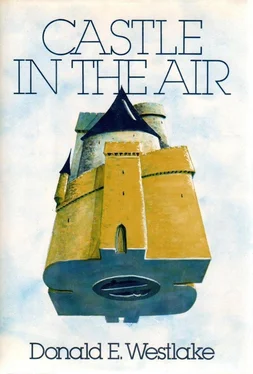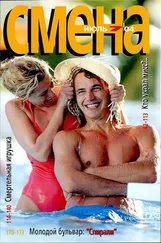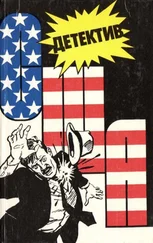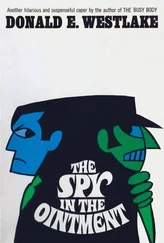Angelo frowned at him. “Don’t you want seven billion lire?”
“Give me an advance on it now,” Vito suggested, “and I’ll go hire someone to open the crates.”
“Vito,” Angelo said, his manner at the same time patronizing, yet truly sympathetic, “what’s the matter with you?”
“I’m an old man,” Vito pointed out. “Until you and that virago came along, I was retired. They never made me work like this in prison.”
“Seven billion lire,” Angelo repeated. “You could buy a yacht, and sail the Adriatic.”
“It’s polluted,” said Vito.
“Sail the Aegean,” Angelo offered.
“It’s polluted.”
“Then sail the Mediterranean!”
“It’s polluted.”
Angelo raised his eyes to heaven. “Then,” he said, “sail the Atlantic Ocean!”
Vito shrugged. “It’s polluted,” he said.
“Then don’t sail at all,” Angelo told him. Angelo had become very angry, mostly because he had no idea how he’d gotten into this conversation in the first place. “Do I care if you sail? Does it matter to me if you sail or not? Don’t sail!”
Infuriatingly calm, Vito said, “I’ll sail if I want to sail.”
Angelo, hands clenched into fists, was still formulating his answer when Rosa came striding around the corner of the unfinished building, glaring at them both and saying, “What’s with you two? What are you doing?”
“I’m resting my heart,” Vito told her.
“I’m working?” Rosa demanded. “I’m standing guard out by the road? And you two loaf?”
“I’ll trade places with you,” Vito suggested.
“To do what?”
“To unload the truck.”
Rosa couldn’t believe it. “You,” she demanded, “would ask a woman to do such a job? A woman like your own mother?”
“All right,” Vito said. “All right.”
“A woman like your sisters,” Rosa said.
Vito, defeated, climbed back up into the truck, saying, “Yes, yes, I’m going.”
Angelo, cheerful, vaulted up into the truck: “Here we go, then,” he said.
Rosa stepped forward to yell into the truck: “A woman like the Holy Virgin!”
“All right.” Vito’s voice came, plaintively, from within the truck. “All right, all right, all right. I didn’t mean it.”
Even Paris has junkyards, and even junkyards can prove unprofitable business ventures. In such a junkyard, containing merely dead auto parts but no fat men in undershirts and not even one killer dog, Andrew Pinkenham and Sir Mortimer Maxwell sat in the sunlight on a pair of ripped and tattered automobile seats tom from their original automobiles, and continued their earlier discussion, while at some distance Bruddy Dunk completed the task of removing all the tarpaulins from their recently acquired truck.
“Look at it this way, Sir Mortimer,” Andrew was saying. “If we don’t take it all, how can they be sure of anything? We take half for ourselves, and give them the other half, and nobody the wiser.”
“I’m opposed to it,” Sir Mortimer insisted. “It’s too dangerous.”
“But it isn’t dangerous at all,” Andrew assured him. “No one knows precisely how valuable this haul is supposed to be; if the result is less than the expectation, it won’t be the first time in the history of the world.”
Bruddy approached from the truck as Sir Mortimer shook his head, saying, “It won’t work.”
“Neither will I,” Bruddy informed them, “if you two don’t hop to it. I’m not the only haul-and-tugger present.”
“Absolutely right, Bruddy,” Andrew said, getting briskly to his feet. “Here we come.”
“This discussion,” Sir Mortimer said, obstinately, as more slowly and reluctantly he, too, stood up, “remains open.”
Progress doesn’t merely add; it also subtracts. One of the unfortunate subtractions currently under way in Paris is the gradual filling in and removal of the system of canals running northward through the eastern part of the city from the Seine to the suburb of Pantin and beyond. At one time, goods from northeast France, and meat from the slaughterhouses of the 19th Arrondissement, were barged south along the Canal St. Denis and the Canal de l’Ourcq into the Bassin De La Villette, just north of the Place de Stalingrad. From there, the waterway tunneled beneath Place de Stalingrad and underwent a change of name, becoming the Canal St. Martin as it zigzagged southward through the 10th Arrondissement. Running through the 11th Arrondissement, the canal has been covered by the Boulevard Richard Lenoir, but the waterway still exists, in slimy and rat-infested darkness, beneath the broad boulevard, and at last re-emerges just south of the Place De La Bastille, where this last section just north of the Seine is called the Gare De l’Arsenal, and is the only segment of the canal still in any kind of ordinary use.
The rest of the canal is nearly dead. Plans are afoot not merely to cover the canal over, as in the Boulevard Richard Lenoir section, but actually to fill it in, to stop the flow of water forever. And from a practical standpoint the canal, while remaining rather attractive here and there, has ceased to be useful. The locks don’t work, the roofs make barge traffic impossible, and only the smallest rowboats can negotiate the canal at all. For many practical reasons, the canal shall die. Too bad it never became a tourist attraction.
The death of the canal has decreed a kind of slow death to many of the buildings which once served it as warehouses and offices, storage areas for the goods shipped along the waterway. Particularly in the northeast corner of the city, up around Boulevard Macdonald, the big hulking empty warehouses remain, their stone walls lapped by the dirty, idle, useless water of the canal.
It was in one such abandoned warehouse that Herman Muller and Otto Berg and Rudi Schlisselmann briskly unloaded the truck they’d so recently acquired at the Arc De Triomphe. Much of the contents of this truck was building blocks, large blocks of shaped gray stone, very heavy and authentic-looking, and it was while carrying one of these that Otto suddenly said, “Look at this. These blocks are all numbered.”
“Naturally,” Herman told him. “That’s so the building can be properly reassembled.”
“This one,” Otto said, squinting to read the painted-on numbers, “is L-274.”
Rudi, just emerging from the truck with another block, said, “Mine’s L-273.”
“They must go together,” Otto suggested.
While Herman went back into the truck, Otto and Rudi put their blocks down side by side. Looking around, Otto said, “I wonder where L-275 is.”
Rudi started poking through the blocks they’d already removed from the truck: “Most of these are different first letters. Here’s some R’s, here’s a couple F’s...”
Emerging from the truck, Herman said, “L-275? I’ve got it here.”
Taking it from him, Otto said, “Good, good.” He placed it in its proper position with the first two.
Rudi, still poking among the other blocks, said, “Here’s L-267.”
“Not yet,” Otto told him. “Put it to one side.”
Subway systems both expand and contract. New York, London, all the older systems have no-longer-used stations, even no-longer-used sub-lines. Paris is no exception, with several abandoned Métro stops, such as the one, for instance, under the intersection of Rue Du Four and Rue Du Cherche-Midi, on the Left Bank, not far from the center of artistic Paris, the corner of Boulevard St. Germains and Boul’ Mich’. This unused stop is on Line Number 10, the one between Porte D’Auteuil and the Gare d’ Orléans/Austerlitz. The stop is, in fact, between the still-used stops of Sèvres-Babylone and Mabillon, and may be seen from your Metro window; look closely.
Читать дальше








